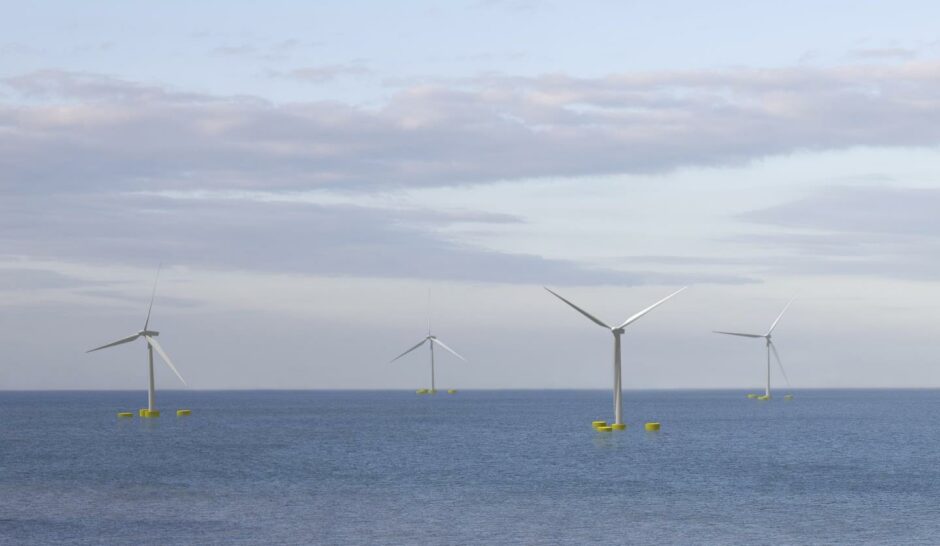
Developers of the Pentland Floating Offshore Wind Farm (PFOWF) have submitted revised plans for the scheme with Scottish regulators, halving the proposed site area without any loss of capacity.
Located around 5 miles off the coast of Dounreay in Caithness, the 100-megawatt scheme will generate enough power for approximately 70,000 homes and play a key role in the qualification of future large-scale floating wind projects.
The project is being developed by Highland Wind Limited – a venture majority owned by Copenhagen Infrastructure Partners (CIP) through one of its funds, alongside minority shareholder Hexicon.
Project development is being led by CIP’s in-house unit Copenhagen Offshore Partners (COP) from the group’s global floating wind headquarters in Edinburgh.
Its latest submission notes that following “extensive consultation” with the local community in Caithness, key changes have been made to the design of the site to minimise its potential visual impact.
This includes reducing the overall offshore site area for the turbines by 50%, to around 4 square miles, and reducing the maximum number of turbines from ten to seven.
However, use of larger turbine designs and a maximum tip height of 300m means the scheme will deliver the same power output of around 100MW.
COP said the changes make for a “more compact” footprint, reducing the spread and visual impact of turbines along the coastline and minimising the potential impact to shipping, navigation, fishing activity and the marine environment.
Plans were first put forward for the scheme – then called “Dounreay Tri” – during the last decade but were shelved in 2017 when the company set up to lead the project folded.
As a result, it already holds consents granted by Marine Scotland for the original project, which the new application will replace.
It also holds a pre-existing lease from Crown Estate Scotland for testing and demonstrating a floating project generating up to 100MW – currently the only such lease in Scotland – and grid connection agreements.
The new application to Marine Scotland is accompanied by an environmental impact assessment and a habitats regulations appraisal.
Project director Richard Copeland described the submission as a “significant milestone” for the project, and highlighted the “far-reaching benefits” of new and secure, low-carbon energy supplies.
“The core aim of the project is to test and demonstrate floating wind technology solutions that will reduce costs and accelerate industrialisation,” he added.
“This will offer learnings to inform the development of future floating projects in Scotland and the UK, such as ScotWind, INTOG and Celtic Sea, and the deployment of floating offshore wind globally, while contributing to building a strong local and national supply chain for the industry.”
Under current plans construction on the project is slated to begin in 2025, most likely with a single turbine deployed to enable time to test and demonstrate the technology. The remaining six units would then be installed in 2026.
The group has already signed a memorandum of understanding (MOU) with Scrabster Harbour which will see the development of an operations and maintenance (O&M) base, services and facilities.
Recommended for you
